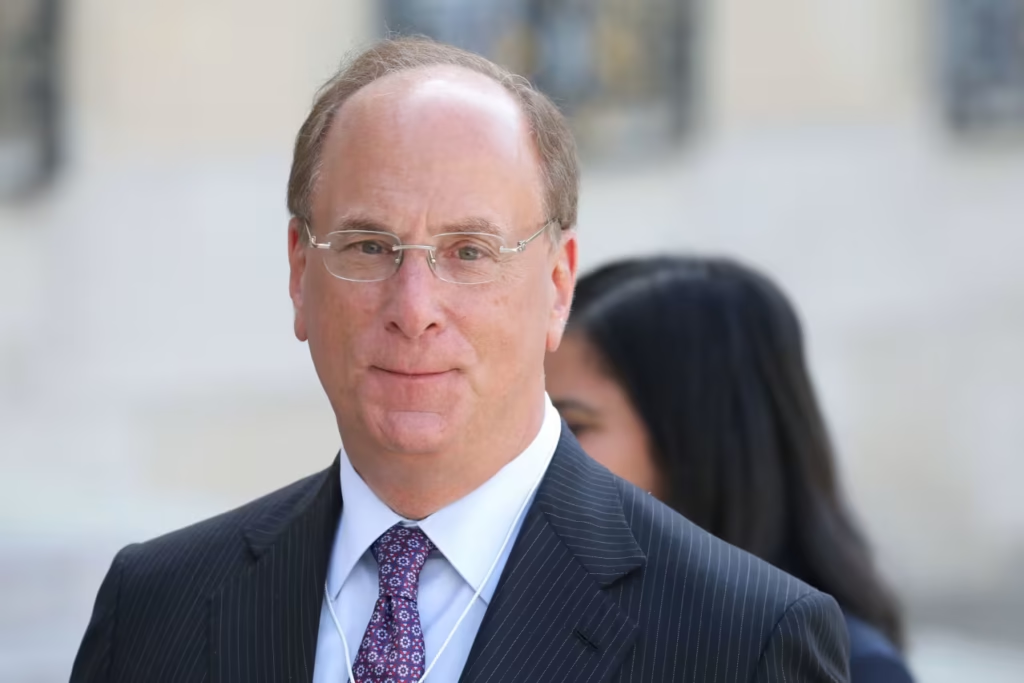Each year, Larry Fink’s annual letter offers a glimpse into the priorities of BlackRock, the world’s largest asset manager, and often sets the tone for broader conversations in the finance and investment world. In previous years, Fink has boldly championed sustainability and the importance of environmental, social, and governance (ESG) considerations in long-term value creation. However, the 2025 edition marks a noticeable pivot—one that invites deeper reflection, particularly for those of us committed to advancing ESG principles in capital markets.
This year, Fink’s core message focuses on democratizing investing, particularly by expanding access to private markets. He calls for rethinking the traditional 60/40 portfolio (60% equities and 40% bonds) in favour of a more diversified 50/30/20 model—50% equities, 30% bonds, and 20% private assets such as real estate, infrastructure, and private credit. Fink argues that these asset classes, once reserved primarily for institutions and ultra-high-net-worth investors, should be made more accessible to everyday investors as a means of enhancing returns and diversification in a complex economic landscape.
From a financial inclusion standpoint, this is a compelling proposition. Giving more people access to private markets could, in theory, level the playing field and unlock wealth creation opportunities that were historically out of reach. It’s also a natural evolution given the lower return expectations from traditional public markets in the current macroeconomic climate.
However, what’s equally striking about this year’s letter is what’s not included.
Unlike previous years, there is no direct mention of ESG or DEI (diversity, equity, and inclusion)—topics that once featured prominently in BlackRock’s public communications and strategic positioning. For a firm that not long ago declared climate risk to be investment risk, this omission speaks volumes. It signals a recalibration in tone and perhaps in priorities, in response to growing political and ideological backlash around ESG in certain parts of the world, particularly the United States.
So, what does this shift mean for the ESG movement more broadly? Is it a retreat, or simply a strategic repositioning?
Reading Between the Lines
The financial world is not immune to political currents, and it’s clear that large institutions are navigating increasingly polarised terrain when it comes to sustainability. BlackRock, in particular, has found itself caught between competing pressures—from progressive stakeholders demanding more ambitious action on climate and inequality, to conservative critics accusing the firm of overreach and political activism.
In this context, the silence on ESG could be viewed as a tactical decision to sidestep controversy. But for those of us committed to long-term value creation that aligns financial returns with positive environmental and social outcomes, the omission is disheartening.
Private markets, the very asset class that Fink is advocating for broader inclusion in, are often less transparent and less regulated than their public counterparts. Without the disclosure requirements that public companies face, issues like carbon emissions, labour practices, supply chain ethics, and governance structures can remain opaque.
This makes ESG integration even more critical in private investments—not less.
If we are truly to democratize investing, it must come with a responsibility to democratize accountability as well. Expanding access to private markets should not come at the cost of abandoning ESG considerations; rather, it should spur innovation in how we measure, manage, and communicate ESG performance in these traditionally hard-to-reach corners of the market.
The Case for an ESG-Infused 50/30/20
A reimagined 50/30/20 portfolio could, in fact, become a powerful vehicle for advancing ESG goals—if done right. Imagine a portfolio where:
-
Equities are screened not only for financial performance, but for alignment with SDGs (Sustainable Development Goals)
-
Bond allocations are directed toward green and social bonds that finance sustainable infrastructure
-
Private assets include renewable energy projects, affordable housing developments, and ESG-aligned venture capital funds
This isn’t just impact investing—it’s smart, long-term investing that recognises the convergence of sustainability and profitability.
Moreover, this approach can mitigate risk. As climate-related risks intensify and social license becomes a business imperative, assets that fail to account for ESG factors could underperform or face regulatory scrutiny. By embedding ESG into the DNA of portfolio construction—across both public and private markets—investors can build resilience, not just returns.
Looking Ahead
Larry Fink’s latest letter is a powerful reminder that the investing landscape is evolving. His call to expand access to private markets reflects an important vision for financial inclusion and diversification. Yet, in stepping back from previous ESG commitments, BlackRock risks sending mixed signals to the market at a time when clarity and leadership are desperately needed.
This moment calls for renewed courage from investors, asset managers, and business leaders alike. ESG is not a fad, nor is it a political ideology. It is a framework for assessing risks, identifying opportunities, and shaping a more just and sustainable economy.
The next frontier in ESG is not just shareholder engagement or public disclosures—it is embedding these principles deeply into the private markets that will increasingly shape our future.
As practitioners, we must keep the torch burning. Because if we lose sight of purpose in pursuit of access, we risk building a bigger tent that forgets why it was erected in the first place.

